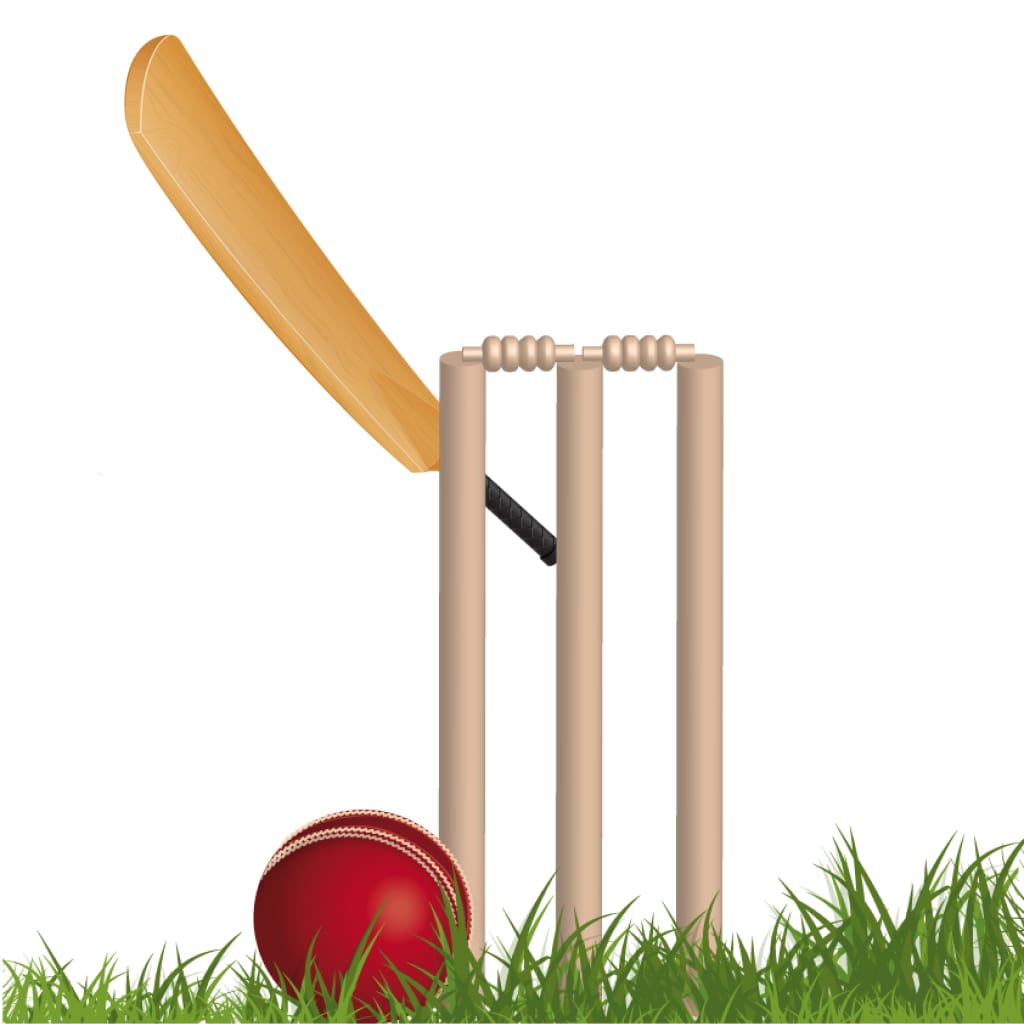What Is A Dot Ball In Cricket?

As a cricketer, you’re trained to value every run and see opportunity in every ball. A strategic element often goes unnoticed by most Cricket fans yet is crucial in the game’s outcome – the Dot Ball. Standing at the crease, bat in hand, you’re not just playing the field but also the odds. Join us as we try to unveil what a Dot Ball is in Cricket, where sometimes, the action lies in the absence of runs.
Dot Ball In Cricket
Every cricketer knows the silent duel that unfolds with each delivery, the mental chess between Bowler and batsman where a single dot ball can be as cutting as a well-placed yorker. But what is Dot Ball in cricket? It represents a move that doesn’t directly score points but sets up the game for future advantage:
- It’s a delivery that ends neither in the hands of the wicketkeeper for a catch nor across the boundary for runs. Instead, it’s a tactical play, a psychological ploy, and a moment of respite in the relentless scoring race of cricket;
- For Bowlers, precision in line and length is vital. Bowlers work tirelessly to perfect their line and length, aiming to deliver balls that are difficult to hit. By targeting the ‘corridor of uncertainty’ just outside the off stump, they can limit the batsman’s scoring options;
- Mixing up deliveries with subtle variations in spin, seam movement, or pace can confuse batsmen, leading to hesitation and, ultimately, a Dot Ball;
- A Cricket Dot Ball can result from field placement. A bowler, in tandem with the captain, might set a field that encourages the batsman to play into areas where fielders are ready to pounce, preventing any runs:
- A shot selection for Batsmen must choose their shots wisely. Sometimes, it’s about respecting a good delivery and not taking unnecessary risks;
- It is a delivery bowled where no runs are scored. It means the batsman either misses the ball, defends it, or hits it directly to a fielder without the chance to take a run. In scorebooks and digital scorecards, these deliveries are recorded with a simple dot, hence the name;
- It is also essential to read the Bowler. Understanding a bowler’s plan and anticipating the delivery type can help convert a potential dot ball into a single or more.
Dot Ball In Limited Overs Cricket
In limited-overs Cricket, the Dot Ball is a double-edged sword. It can be a bowler’s ally or a batsman’s foe, depending on which side of the crease you stand. The strategies and mind games that revolve around the Dot Ball make it a focal point of modern Cricket’s tactical playbook. Here is how you can maximise scoring in formats like One Day Internationals (ODIs) and Twenty20 (T20):
- From a strategic point of view for bowling Dot Balls in Limited overs, a Bowlers’ tactics will depend on:
- Powerplay precision;
- Death over variations;
- Psychological warfare;
- The fielding strategies can add to the tally of Dot Ball in Cricket:
- Sharp fielding within the inner 30-yard circle;
- Pay close attention to the Boundary Riders;
Overall, it is particularly significant in One Day Internationals (ODIs) and T20s. With a restricted number of overs, each ball becomes an opportunity to score. Therefore, it is a victory for the bowling side as it maintains pressure by limiting scoring opportunities:
- Bowler-batsman matchups are a great opportunity. Teams often plan for specific bowler-batsman matchups, where a bowler’s style is particularly challenging for a batsman, increasing the likelihood of dot balls;
- Situational Awareness. Understanding the match situation, such as the need for the batting team to accelerate, can guide bowlers in their approach to force dot balls.
Records for Most Dot Balls
The record for the most dot balls bowled in an innings or across a tournament is a testament to a bowler’s control and ability to dictate the game’s pace. These records are particularly revered in limited-overs cricket, where the economy rate is as crucial as taking wickets. Achieving a high number of dot balls is a clear indicator of a bowler’s skill in stifling the batsmen’s attempts to score, thereby building pressure that can lead to mistakes and wickets:
- From the Bowlers’ approach, it means maintaining a disciplined line and length. They have to read the batsman’s intentions and adjust their deliveries accordingly to increase the chances of bowling a Dot Ball;
- From the Captain’s tactics point of view, he can bring on bowlers who have favourable records against particular batsmen, increasing the likelihood of Dot Balls. The Captain can also make dynamic field changes. Making quick changes to the field in response to the batsman’s tendencies can result in more Dot Balls.
Records for the most dot balls bowled in an innings or tournament are often held in high regard, as they reflect a bowler’s ability to control the game and restrict the batsmen. Here are some hints for setting Dot Ball records:
- A bowler’s stamina and fitness can play a significant role in consistently delivering it throughout their spell.
- The psychological aspect of bowling, especially in high-pressure situations, can influence a bowler’s capacity to deliver it consistently.
How To Earn A Dot Ball in Cricket?
Earning it is a triumph for the bowling and fielding team. It’s a collective effort that starts with the Bowler’s skilful delivery and is often completed by the fielders’ sharp reactions. Earning a Dot Ball meaning can be the result of good bowling, strategic field placement, or a batsman’s error. Bowlers aim to deliver balls that are difficult to hit by either deceiving the batsman with the flight, turn, swing, seam, or pace or by targeting areas where the fielding is solid.
Avoiding Dot Ball
For batsmen, the art of avoiding it is critical, especially in the fast-paced formats of the game, where every ball counts. It’s about being proactive, finding gaps, and turning the strike over to keep the scoreboard ticking. Here’s how batsmen can work to minimise the number of Dot Balls they face:
- One of the most effective ways to avoid a Dot Ball game is by rotating the strike. Even if boundaries are hard to come by, taking singles keeps the score moving;
- Batsmen can use their feet to convert good length deliveries into scoring opportunities, either by coming down the pitch or by going deep in the crease;
- By playing the ball late, batsmen can use the pace of the ball to guide it into gaps, especially in a packed infield;
- Employing soft hands allows for quick singles, as the ball won’t travel fast to the fielders, creating more opportunities to run;
- Being aware of the fielders’ positions and the Captain’s strategies can help batsmen find gaps and take quick singles;
- Adopting a positive and aggressive mindset can put the bowlers on the defensive, creating more scoring opportunities.
What Are the Benefits Of Dot Ball?
The benefits of dot balls extend beyond the immediate lack of scoring. Dot Ball, meaning in cricket, plays a significant role in the overall strategy of an innings. Whether it’s through disciplined bowling, dynamic fielding, or even psychological warfare, they can impact profound and often game-changing:
- From building pressure to controlling the game’s tempo, they can be a potent weapon in a team’s arsenal. Sometimes, it means some pressure-building impact. Consistent they can shift the momentum towards the bowling team, creating an atmosphere of pressure that can lead to wickets;
- A sequence of dot balls can get into the batsman’s head, causing frustration and forcing errors in judgment;
- In limited-overs cricket, they are crucial for controlling the run rate and setting up for a competitive finish;
- When defending a low total, maximising the number of Dot Balls can be a critical defensive strategy to put the batting side under pressure.
Dot Ball: Why is it Called That?
The term “dot ball” in Cricket is derived from the scoring notation used by scorers to record such a delivery. When a ball is bowled, and no run is scored off, the scorer marks a small dot in the scorebook. Over time, this notation became synonymous with the delivery itself, and thus, the term was born. It comes from the traditional scoring method, where a dot is marked on the scorebook. It’s a visual representation of a delivery where the Bowler has not conceded any run.
Reason For Dot Ball
The occurrence of a dot ball can be attributed to various tactical and situational factors within a game of Cricket. Understanding these reasons is crucial for both teams to strategise accordingly:
- It can occur due to various reasons: a well-bowled delivery, defensive batting, or a strategic play by the fielding team to prevent runs;
- Bowlers often employ variations in pace, swing, or spin to outfox the batsman, resulting in a delivery that is not put away for runs;
- If the Batsmen use a defensive play. He can play it intentionally when they are being cautious, especially during a bowler’s good spell or when the ball is moving a lot;
- Sometimes, a batsman may misread the delivery or get surprised by it, leading to a defensive shot, a miss, and consequently, a Dot Ball.
Exploring the Various Factors That Contribute to Dot Balls in Cricket
In cricket, they are not just happenstances; they are often the result of a confluence of deliberate strategies, player skills, and match conditions. These include the quality of bowling, the batsman’s skill and pitch conditions. But also match situation and psychological factors like pressure and the batsman’s confidence. Understanding the multifaceted factors contributing to dot balls is essential for teams to capitalise on or mitigate their impact.
Conclusion
In conclusion, it is a powerful component of Cricket, encapsulating the duel between bat and ball. It’s a chess move that demands physical prowess and mental agility. They are an integral part of Cricket, often overlooked in the glamour of sixes and fours. Whether in the buzzing stadiums during the IPL or a local game on a village green, the dot ball remains a silent yet potent force that can define the spirit and strategy of Cricket.


















